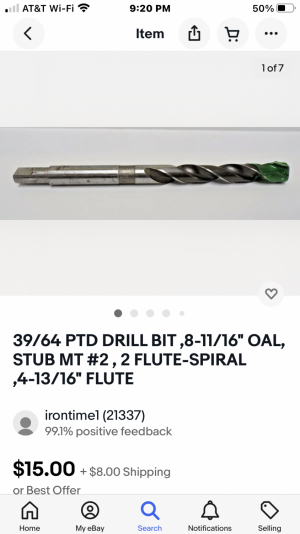- Joined
- Sep 8, 2019
- Messages
- 4,392
I bought an Israeli 1-1/2” end mill holder. After I bought it, I noticed how very few 1-1/2” shank cutting tools are available for it (with the exception of indexable end mills as those are commonly available with a 1-1/2” straight shank).
I picked up a USA made & 2 Made in India adapters that are MT (numbers 2,3 and 4) inside & 1-1/2” straight shank outside. These are also sometimes called adapter sleeves.
The only MT cutting tools that I have are taper shank drills, and these tend to have quite a long projection in relation to their diameter. What is more, the aforementioned adapter sleeves project out of the end mill holder by up to almost 2”. I haven’t tried the MT2 adapter sleeve in the EMH yet; hopefully the EMH will contain the whole adapter.
A consensus of forum members have pointed out that this long combined projection of end mill holder, adapter sleeve stickout & the drill may well pose a risk to the operator and/or machine.
What other MT cutters or other tools might one ever use on a knee style milling machine that don’t raise safety concerns?
I picked up a USA made & 2 Made in India adapters that are MT (numbers 2,3 and 4) inside & 1-1/2” straight shank outside. These are also sometimes called adapter sleeves.
The only MT cutting tools that I have are taper shank drills, and these tend to have quite a long projection in relation to their diameter. What is more, the aforementioned adapter sleeves project out of the end mill holder by up to almost 2”. I haven’t tried the MT2 adapter sleeve in the EMH yet; hopefully the EMH will contain the whole adapter.
A consensus of forum members have pointed out that this long combined projection of end mill holder, adapter sleeve stickout & the drill may well pose a risk to the operator and/or machine.
What other MT cutters or other tools might one ever use on a knee style milling machine that don’t raise safety concerns?



